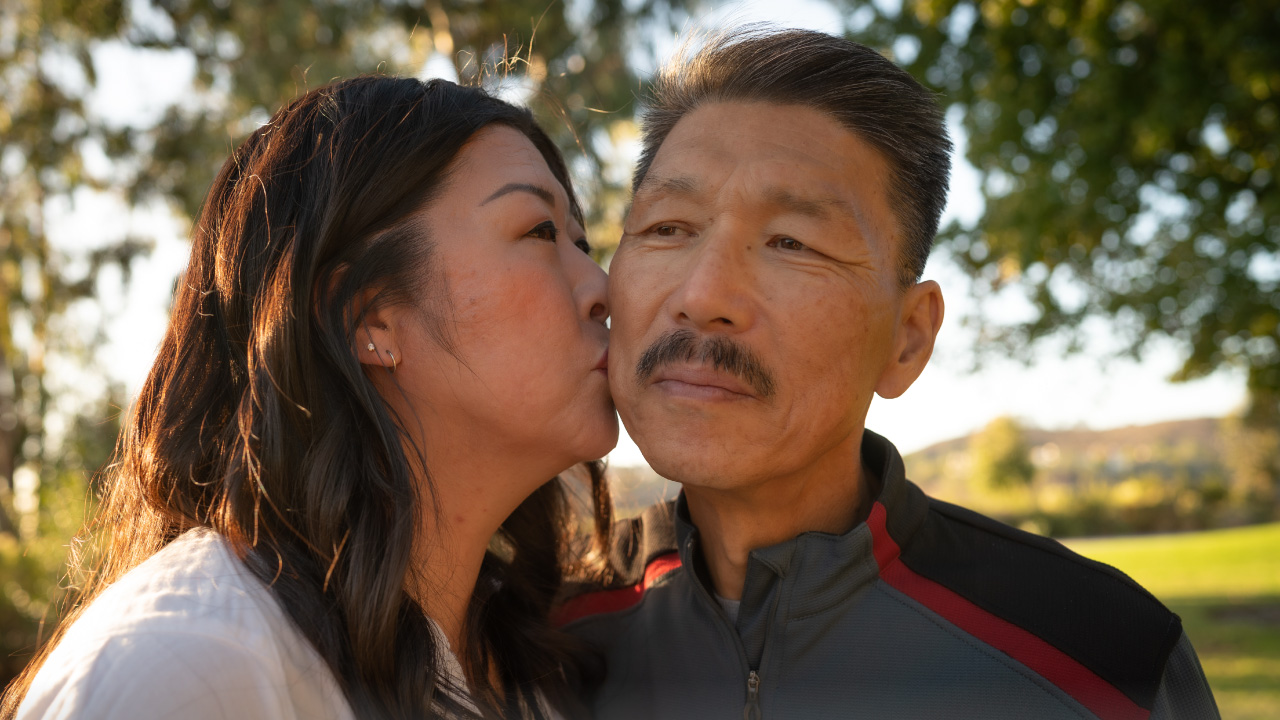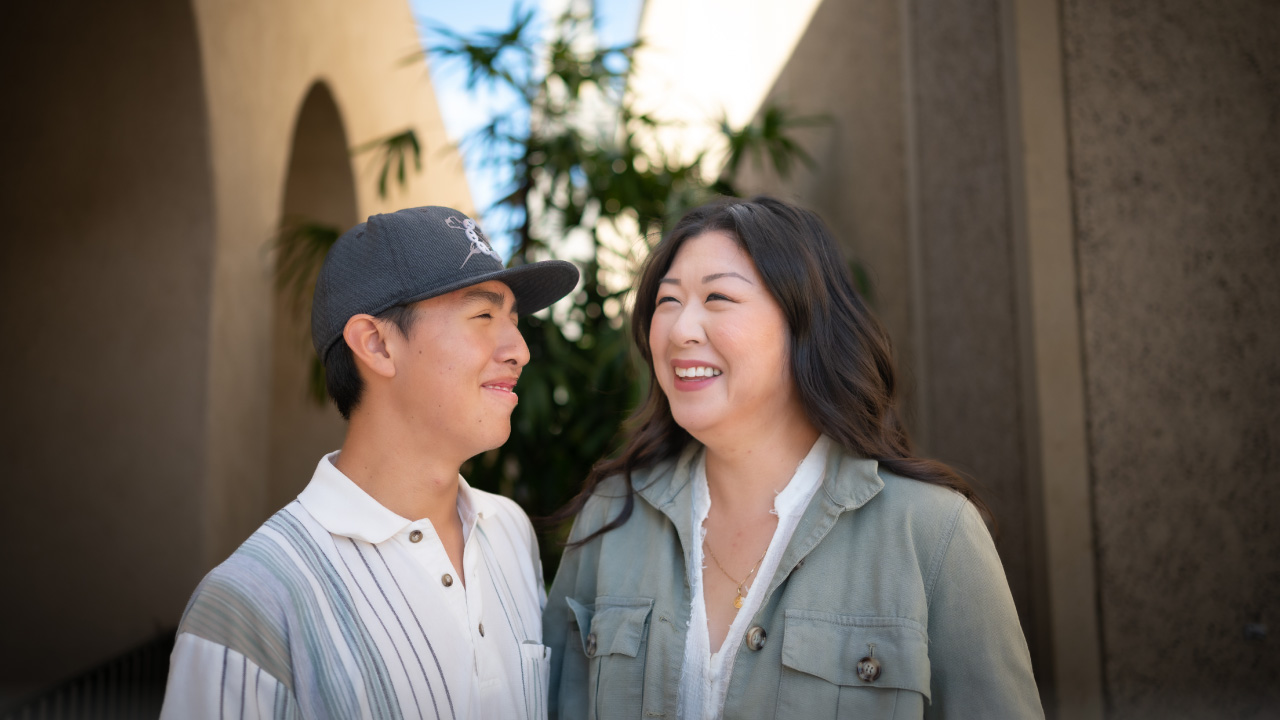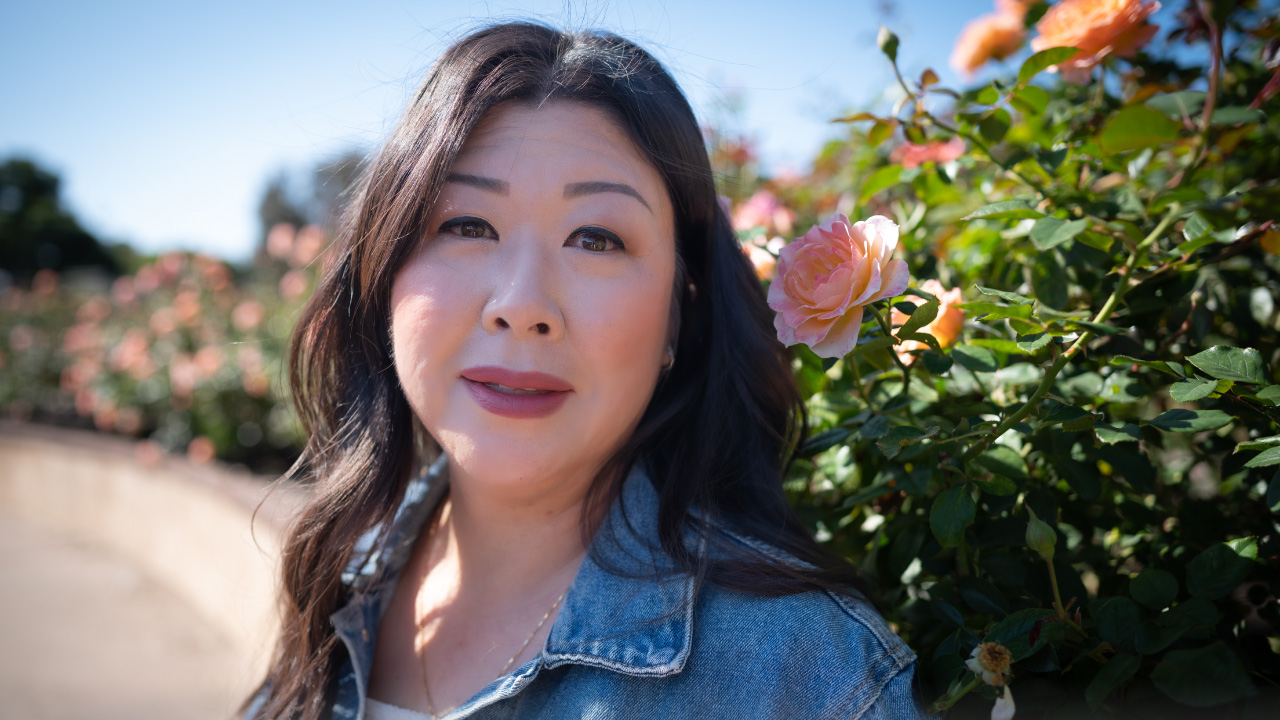Nancy | Living with ATTR Amyloidosis with Polyneuropathy
San Diego, CA

Nancy, living with ATTR-PNTransthyretin (ATTR) amyloidosis resulting in severe and permanent peripheral nerve damage, and manifested through symptoms that include tingling and numbness in legs and feet, difficulty walking, limb weakness and pain. Polyneuropathy is also known as peripheral neuropathy.
I look at my dad and think, ‘Is that what’s going to happen to me in the future?’
Perseverance was ingrained in Nancy from an early age and has allowed her to fill the role of caretaker, single mother and nurse. “Nursing is a physical job,” she says. Although the long shifts and emotional intensity has not scared her away, she does worry sometimes about the toll it takes on her body.
For years, Nancy struggled with carpal tunnel syndrome and nerve pain in her arms, hands, and wrists. “I feel like as someone dealing with a chronic illness, I learn to power through,” Nancy says. “I can’t just stay in bed all day. Trust me, there are days I would love to do that, but I don’t have a choice.”
While attending nursing school in her hometown of San Diego, Nancy moved back in with her parents. Nancy and her father, Il Hyung, not only share a home but also a chronic health condition: transthyretin amyloidosisAlso known as ATTR amyloidosis. A rare genetic disease caused by accumulation of misfolded transthyretin (TTR) protein, which affects the nerves, heart, kidneys and eyes. Patients can develop amyloidosis by inheriting the faulty TTR gene from a parent (hereditary ATTR amyloidosis, ATTRv or hATTR) or due to a natural form of this protein, without genetic mutation (wild-type ATTR amyloidosis, ATTRwt or wtATTR). NTLA-2001, Intellia’s first investigational therapy, is being evaluated in a Phase 1 clinical trial as a treatment for people who have hereditary ATTR with polyneuropathy., also known as ATTRAlso known as ATTR amyloidosis. A rare genetic disease caused by accumulation of misfolded transthyretin (TTR) protein, which affects the nerves, heart, kidneys and eyes. Patients can develop amyloidosis by inheriting the faulty TTR gene from a parent (hereditary ATTR amyloidosis, ATTRv or hATTR) or due to a natural form of this protein, without genetic mutation (wild-type ATTR amyloidosis, ATTRwt or wtATTR). NTLA-2001, Intellia’s first investigational therapy, is being evaluated in a Phase 1 clinical trial as a treatment for people who have hereditary ATTR with polyneuropathy. amyloidosis. This rare, genetic condition is caused by a buildup of misfolded transthyretin (TTR) proteinAlso known as TTR protein. Produced by the TTR gene. The disease, transthyretin (ATTR) amyloidosis, occurs when a specific DNA mutation occurs in the TTR gene that causes the liver to produce the TTR protein in a misfolded form. This misfolded protein can build up in the body and lead to disease-causing nerve and other organ damage.. This buildup can occur in various parts of the body and cause a range of symptoms affecting the nervous system or other organs. Nancy’s primary symptom is polyneuropathyTransthyretin (ATTR) amyloidosis resulting in severe and permanent peripheral nerve damage, and manifested through symptoms that include tingling and numbness in legs and feet, difficulty walking, limb weakness and pain. Polyneuropathy is also known as peripheral neuropathy., which manifests as pain and discomfort in her extremities.
Transthyretin also builds up in the heart, meaning Nancy may have cardiac complications as she ages. Because of her father, this is something she understands all too well.
A little over a year ago, Il Hyung received a heart transplant, the only viable option for his failing heart. “I look at my dad and think, ‘Is that what’s going to happen to me?’”
Il Hyung was fortunate enough to find a donor match at the age of 67. Out of aIl Hyung’s six siblings, only he and one brother are still alive — a legacy of cardiac-related deaths likely due to undiagnosed ATTR.
“My relationship with my father has evolved,” Nancy explains. “I’m not only his daughter, but also one of his caregivers.” This bond has strengthened through the many challenges since diagnosis, including receiving infusions together.
For years, Nancy suspected something genetic was affecting her father’s side of the family but didn’t associate it with what was going on in her own body. “Even within the same family, our experiences are different,” she says. “I had occasional heart palpitations, which were unnerving, but they didn’t seem anywhere near as serious as my father’s cardiac issues.”
She reached out to a specialist and decided to get tested for ATTR. When Nancy finally received a diagnosis at age 35, she realized all the symptoms from the last 10 years were not random but related to a genetic condition.
Nancy and Il Hyung were diagnosed in spring of 2019. It did not come as a surprise. “It would have surprised me more if I didn’t have it,” Nancy acknowledges. Their doctors informed Nancy and Il Hyung about newly available treatments. However, her mind couldn’t help but think about the next generation.
“My immediate thought was I need to get my son, William, tested,” says Nancy. She met with a genetic counselor, who laid out the options. “I learned if he did have ATTR, he wouldn’t qualify for treatment until he was 18,” says Nancy. She opted to wait. For Nancy, this difficult decision was influenced by her desire to integrate her rare disease into her life without letting it entirely redefine her. “I want to feel like: Yes, I have this disease — but I don’t want it to be my main focus in life.”
Regardless of William’s genetics, he may have more treatment options and access to earlier interventions. “It’s amazing that there are new therapies out there,” says Nancy. “I am hopeful there might be a cure for people like my son in the future.”
With this knowledge, William’s love and admiration for his mother shines through. The pandemic and subsequent lockdowns meant William, Nancy and her parents all occupied close quarters for some time. It was then he stepped up to help. “My son is such great support for my mental health,” Nancy says. “He can tell when I’m at my limit, burnt out or pushing myself too much.”
Upon his request, they head out to Balboa Park together. The iconic San Diego park provides plenty of small attractions often overlooked by tourists. Despite the challenges of the last few years, Nancy has opened a new chapter in her life, putting her profound personal experience to good use as a nurse. “A large part of what makes me want to be a nurse is compassion and providing authentic care to help improve the lives of others,” she says. “I’ve been a patient in the hospital before. I understand what that’s like.”





